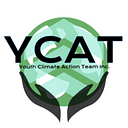Greenland’s September Melt
This year, the Greenland ice sheet has experienced an unparalleled melt season, with record losses bleeding into early September, while about 10 percent continues to melt. This phenomenon takes place in the middle of summer, rarely lasting into the early fall. Covering nearly 80 percent of Greenland and as a key signaler of climate change, this is not just a “once-in-a-blue-moon” occurrence; it has set a dire tone for the next decade.
Greenland’s cycle typically begins with gaining snow in September, then continuing to accumulate mass through the autumn and winter months. In late spring, the ice sheet starts to lose ice through surface melt as it warms up until the end of August. This cycle is referred to as the “surface mass balance.” “Unhealthy” glaciers experience a negative surface mass balance. As of late, Greenland’s ablation area — the area experiencing a net loss in ice mass — is greatly expanding.
The Arctic is warming much faster than the rest of the world, and Greenland’s melting rate currently surpasses the world’s largest mountain glaciers as well as the continent of Antarctica. Although much of the ice melted at the surface will make its way back to the snow on top of the sheet where it will refreeze, 250 billion tons of ice is dumped into the ocean from the remaining runoff each year. Once the snow begins to fill up with liquid ice, there will not be any room for this refreezing to occur.
Xavier Fettweis, a climate scientist at the University of Liege in Belgium, informed Scientific American that when winter approaches, the liquid water will refreeze faster and form hard lenses on the surface of the ice sheet. Consequently, next year’s meltwater will face difficulty penetrating the surface and be forced to run off into the ocean. Mass losses of this caliber have been seen before but can be expected to occur more frequently as global warming begins to lengthen the seasons, exacerbating this “domino effect.”
The September melting also presents a humanitarian issue. A recent study discovered that even if people completely halted greenhouse gas emissions today, 3.3 percent, or 110 trillion tons of ice will still melt, causing a half-foot sea level rise by 2100. To put this into perspective, countries such as Egypt, Bangladesh, the Netherlands, Lagos, and Thailand could be entirely drowned or have vast tracts of land that are uninhabitable if greenhouse gas emissions grow higher and lead to a one foot increase in sea level.
Ice sheets are always melting and responding to the temperatures around them, yet Greenland’s situation is different because of its mass, so adjustment takes a very long time. The projected losses are inevitable with the increase in greenhouse emissions, even if it takes centuries to occur.
“We have caused the ice sheet to go out of equilibrium. We’re melting it faster than the ice can move downstream and replenish areas that are melting,” David Bahr, a glaciologist at the University of Colorado Boulder, told USA Today.
Scientists are faced with a new question: if true losses can potentially be worse than the forecasts, what will the world do with all of this ice? How do governments plan to preserve their coastlines — their population clusters — when seawater begins encroaching on human settlement?
The Indiana University Environmental Resilience Institute recommends that governments begin to construct new infrastructure, such as flood barriers that protect critical infrastructure and equipment and focus strongly on maintaining wetlands, which act as a buffer to disasters such as storm surges. Another strategy is called “hard” and “soft” shoreline maintenance, which includes the creation of seawalls as well as dunes along beaches.
Although recent statistics are in no way optimistic, there are a number of strategies that will help countries adapt to these encroaching threats. Even so, these operations must not be delayed any further, as glaciers are crucial indicators of the planet’s health and must be paid attention to.
